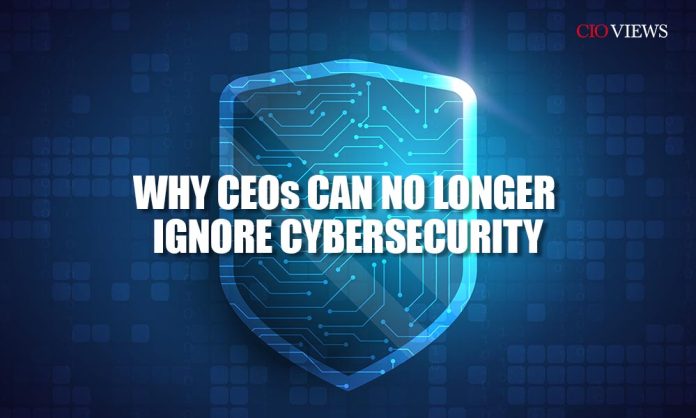In today’s rapidly changing digital ecosystem, cybersecurity is no longer a back-office issue; it is a boardroom imperative. Recent high-profile breaches have disrupted operations, eroded stakeholder trust, devalued stock prices, and forced CEO resignations.
The threat landscape is expanding, as is leadership’s responsibility to address it proactively.
The Wake-Up Call: Major Cyber Incidents CEOs Can’t Overlook
The cyberattacks on SolarWinds, Colonial Pipeline, Equifax, and MOVEit Transfer are not isolated incidents. They are loud, systemic warnings that no organization, regardless of size or industry, is immune. Each of these events revealed not only technical vulnerabilities but also executive-level oversight failures.
-
SolarWinds (2020): One of the most damaging supply chain attacks in history. Threat actors infiltrated over 18,000 customers, including government agencies and Fortune 500 companies. The root cause? A compromised software update due to poor code security and lax third-party risk oversight.
-
Colonial Pipeline (2021): A ransomware attack that shut down critical fuel supplies across the Eastern U.S. The company paid $4.4 million in ransom. More importantly, it demonstrated how CEOs must understand operational technology (OT) risks, not just IT threats.
-
MOVEit Transfer Exploits (2023): More than 2,000 organizations globally were impacted by this zero-day vulnerability. Customer data, employee records, and sensitive IP were stolen, underscoring the importance of regular vulnerability management and third-party risk audits.
Each of these attacks had devastating financial, reputational, and regulatory consequences, turning cybersecurity into an existential risk that CEOs can no longer delegate or defer.
Cybersecurity Is Now a CEO-Level Responsibility
Cybersecurity is no longer confined to the IT department. Regulators, investors, and consumers now expect CEOs to demonstrate clear leadership and accountability in managing cyber risks.
-
SEC Regulations (2023): The U.S. Securities and Exchange Commission now mandates public disclosure of material cybersecurity incidents within four business days. Additionally, companies must outline board oversight and management’s cybersecurity expertise in annual reports.
-
GDPR and Global Privacy Laws: Non-compliance can lead to massive penalties, such as the €746 million fine imposed on Amazon. CEOs are increasingly being held personally accountable for failing to protect user data.
A CEO’s lack of cyber literacy is no longer acceptable. They must be able to answer:
-
What are our top cyber risks?
-
Do we have an incident response plan?
-
How often are we tested for vulnerabilities?
-
Are we investing enough in cybersecurity training and tools?
The True Cost of Cyber Inaction: More Than Just Fines
The direct costs of a cyber breach are staggering—data recovery, legal fees, regulatory fines, and ransom payments. But the indirect costs can be even more crippling:
-
Loss of customer trust: Studies show that 65% of consumers lose trust in companies after a data breach.
-
Drop in share price: Publicly traded companies see a 5–10% average drop in stock value post-breach.
-
Executive fallout: CEOs and CISOs at companies like Equifax and Uber were forced to step down after cybersecurity failures.
Cyber incidents have become career-defining moments for CEOs. Either they demonstrate preparedness and resilience, or they face reputational ruin and leadership turnover.
Why Cyber Resilience Is the New Competitive Advantage
Cyber resilience equals business resilience. Companies that bake cybersecurity into their culture, strategy, and operations are better equipped to:
-
Win customer trust by demonstrating a commitment to data protection.
-
Secure digital transformation projects without risking operational downtime.
-
Outperform competitors during crises by recovering faster and minimizing impact.
A robust cybersecurity posture also helps attract investors, partners, and top talent, all of whom now scrutinize an organization’s cyber maturity as a core KPI.
Key Cybersecurity Lessons for CEOs from Recent Attacks
To avoid becoming the next cautionary tale, CEOs must internalize the following lessons from recent cyber incidents:
1. Cybersecurity Requires Top-Down Leadership
Executives must lead by example—cybersecurity cannot be an IT-only function. Regular board-level updates, C-suite involvement in simulations, and performance metrics tied to cyber preparedness are essential.
2. Third-Party Risks Are Enterprise Risks
Attackers increasingly exploit vulnerabilities in vendors, partners, and suppliers. CEOs must ensure robust third-party risk management frameworks, including contract clauses, compliance checks, and regular audits.
3. Zero Trust Is the Future
The traditional perimeter-based security model is obsolete. Implementing a Zero Trust Architecture—where no device, user, or system is trusted by default—is critical to defending modern enterprises.
4. Incident Response Readiness Is Crucial
An incident will happen. What matters is how you detect, respond, and recover. CEOs must champion frequent tabletop exercises, establish clear escalation paths, and ensure cyber insurance is in place.
5. Employee Awareness Is a First Line of Defense
Humans are often the weakest link. Phishing attacks, social engineering, and password hygiene are all major concerns. CEOs must support continuous cybersecurity awareness training across the organization.
How Forward-Thinking CEOs Are Making Cybersecurity a Strategic Priority
Some visionary leaders are setting the standard for cyber-forward leadership:
-
Microsoft’s Satya Nadella has invested billions in securing Azure and integrating AI-driven threat detection across products.
-
Apple’s Tim Cook has positioned privacy and data protection as core to the brand’s identity.
-
IBM’s Arvind Krishna speaks regularly on cyber resilience and has built cybersecurity into the company’s enterprise strategy.
These CEOs aren’t just reacting—they are leading the charge and influencing industry best practices. Their actions show that cybersecurity is a growth enabler, not just a cost center.
The Path Forward: A Cybersecurity Roadmap for CEOs
To build a resilient digital enterprise, CEOs must:
-
Elevate cybersecurity to the boardroom agenda and tie it to overall risk management.
-
Fund cybersecurity appropriately, aligning investments with the organization’s threat profile.
-
Foster a culture of security, where every employee takes ownership.
-
Collaborate with CISOs, CIOs, and legal/compliance teams to align cybersecurity with business goals.
-
Stay informed about the evolving threat landscape and emerging technologies like AI-driven attacks and quantum computing risks.
Conclusion: The Cybersecurity Mandate for Modern CEOs
Cybersecurity is no longer optional—it is existential. CEOs must champion cyber resilience as a business priority, not a technical issue. Those who act decisively will safeguard their organizations, protect their stakeholders and as leaders in the digital economy. Those who don’t risk becoming case studies in avoidable failure.





